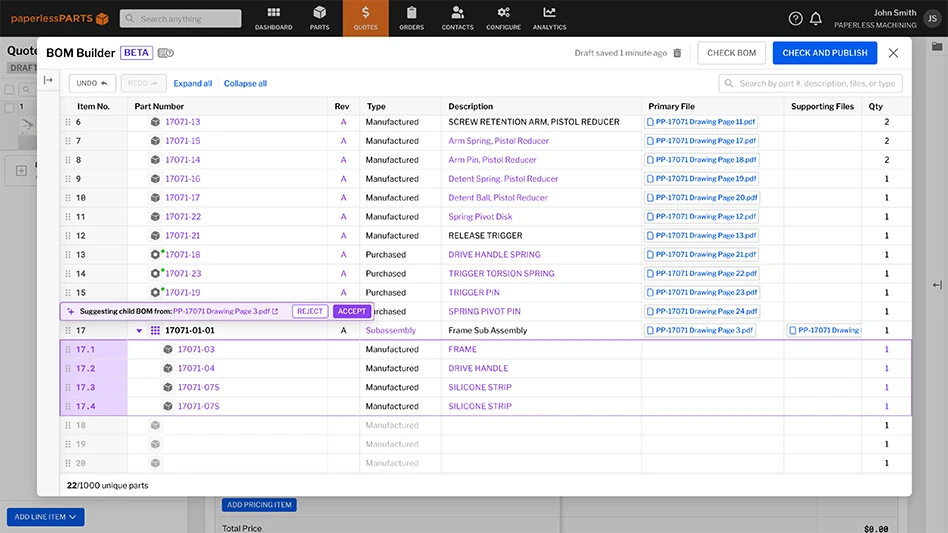
Minimally invasive surgical (MIS) procedures are good for both patient and doctor. With reduced risk and faster recoveries, applying minimally invasive techniques in more clinical scenarios is a healthcare ideal. Advancements on this front are made possible by sensor miniaturization, increased sensor precision, and highly effective device/sensor integration.
New electromagnetic (EM) tracking solutions play a critical role as well. Novel improvements solve distortion challenges inherent to legacy tracking systems, and device design and development are simplified with sensor performance already validated to the platform. It’s a competitive approach, allowing medical device designers to tap into reduced time-to-market and a streamlined development strategy. As a result, a greater number of medical devices are optimizing the use of precise surgical navigation in increasingly diverse clinical procedures.

Broadened surgical applications
The detection and mitigation of distortion is a new advantage, helping pioneer new applications in surgical navigation. Next-generation EM tracking technology enables medical device designers to easily access and customize accurate and reliable tracking features in their diagnostic and therapeutic products.
“Our EM system mitigates various potential interferences via a design that ensures high accuracy and precision even as the system is deployed across a wide range of clinical use cases,” says Andrew Brown, CEO, Radwave Industries. “When paired with advanced electromagnetic sensors, these capabilities empower physicians to handle increasingly sophisticated, minimally invasive options.”
Sensors in this system are provided by TT Electronics and pre-calibrated to the platform, reducing both risk and time-to-market for the device developer. Sensor characteristics are defined by degrees of freedom, or the sensor’s capacity for accuracy. Five or six degrees of freedom (5DOF and 6DOF) correlate to the trackability of the sensor, empowering designers with a balance of precision and size best suited for their specific minimally invasive device.
With this advancement, the EM tracking platform’s antenna recognizes whether distortion is present, its general strength, and the direction of its source. Once the system detects distortion, it executes a range of mitigations that ensure accurate location information is delivered from the sensing volume’s full slate of sensors. This solves the legacy approach to EM tracking, in which clinicians needed to selectively minimize equipment used nearby to alleviate distortion.
Additionally, older EM systems’ reliance on wider electromagnetic frequency bands created the potential for interference with medical equipment. Because of the advanced technology in play today, many legacy EM systems are prevented from being used simultaneously or in proximity to sophisticated machines such as ECG, other biopotential signals, and fluoroscopic C-Arms used for imaging.

Conclusion
EM tracking with sensor integration means a complete EM tracking system is available to the medical device industry, an advantage that helps device developers focus resources on distinguishing their own devices. Better surgical vision – vision beyond the line of sight – is making a difference, arming skilled clinicians with even smarter and more functional tools, and bringing minimally invasive techniques to more healthcare disciplines.
TT Electronics
https://www.ttelectronics.com
About the author: Garrett Plank is the business development director at TT Electronics. He supports TT Electronics’ global business development featuring innovative solutions for surgical navigation, active implantable devices, and therapeutic and diagnostic medical equipment. Connect with Garrett at garrett.plank@ttelectronics.com or LinkedIn.

Explore the September 2023 Issue
Check out more from this issue and find your next story to read.
Latest from Today's Medical Developments
- Integer expands operations in Salem, creating 83 jobs
- Siemens unveils new Teamcenter X: Revolutionizing SaaS PLM for all manufacturers
- 3 Questions with an Expert with Allied Machine & Engineering
- Supply Chain Power – A strategic program for executives
- Sunnen Products' PGE-6000 gage
- April Manufacturing Lunch + Learn with Iscar
- April Manufacturing Lunch + Learn with Insaco
- Laser cold marking for plastic medical device manufacturing





